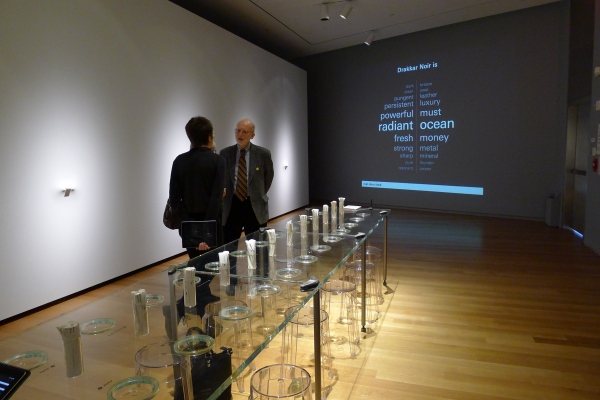Touring The Art of Scent Exhibit at the Museum of Art and Design New York
Victoria’s Note: Today Daisy Bow will take us through the Art of Scent Exhibit at the Museum of Art and Design in New York. You may know Daisy from her comments here and from her fun blog, Cool Cook Style. Daisy recently completed her doctoral degree in French Literature from New York University, and she is currently teaching a course on French Food and Culture as part-time faculty at the New School. Her love affair with perfume began with Dune at the tender age of 14. She has smelled great ever since.
“Scent can do what all art does: change the way we perceive the world,” says Chandler Burr, the director of the olfactory art department at the Museum of Art and Design. According to him, the fundamental concept for The Art of Scent exhibit, its layout, and its chronological organization has its genesis in a talk that he gave in 2008 at The Times Center when he was still the scent critic for the newspaper. For the sold-out event, individual blotters for each of the 15 different fragrances chosen were provided to over 400 guests. As the runners did their work, Burr played a piece of music that was also representative of the style of the scent distributed. Each work was accompanied by visual presentations of painting, sculpture, and architecture too.
Since its opening in New York, much of the discussion on The Art of Scent has focused on how Burr uses different artistic movements and schools to talk about different works of olfactory art. Burr emphasizes that “none of these analogies are exact.” The parallels drawn between scent and other mediums exist to provide us an intellectual tool with which to talk about it as art. “I want to place scent as an artistic medium in the center of all the arts: music, dance, literature, painting, and sculpture. [Scent is] just one medium. Each medium is different. Some of them used certain schools and some of them didn’t. For example, Romanticism from roughly 1800-1840 was ascendant in literature, poetry, and painting. However Romanticism in music was in the late 1800’s. [Alfred] Einstein, the great cataloguer of music, takes the Romantic period up to 1940. Not every medium used it at the same time,” Burr explains.

















Ewan in Spring 2024 Perfume Launches : Lilac, Vetiver, Moss and Seaweed: I took the opportunity to blend seaweed, vetiver and mimosa essential oils. It is a very pleasant and interesting menage a trois. At first the seaweed hits the nose but… April 18, 2024 at 1:32am